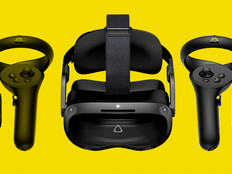Retail Technologies Make Education More Efficient
Technologies with retail-sector origins are making schools more efficient.
When the 71-school Garland Independent School District opened its ambitious Special Events Center in northeastern Dallas County five years ago, it was immediately clear that its designers had thought big. The 190,000-square-foot complex – home to graduations, concerts, performances and athletic competitions – was built from the ground up as a state-of-the-art facility.
The district-owned center was such a success, hosting more than 400,000 visitors annually, that staff members began thinking even bigger. First, they installed a networked digital signage system. Then, with revenues and efficiency in mind, they brainstormed ways to generate more business and reduce the headaches associated with the manual ticket distribution system they'd been using.
“We were selling preprinted tickets we bought on rolls, but tracking sales was challenging – especially for reserved-seating events,” says events center accountant Tom Barron. “We handle so many events that it soon became complicated to know which seats were filled and which weren't.”
Transforming the center into a world-class commercial venue meant automating ticket distribution, so Barron and Jacob Velasquez, the district's technology coordinator for athletics, issued a request for proposals in fall 2009. By January they were overseeing the installation of a high-end, fully integrated system composed of five Elo 17A2 all-in-one touchcomputers with integrated 17-inch LCD touchscreens, motherboards, hard drives and 1 gigabyte of memory (expandable to 2GB).
The Microsoft Windows XP systems also include USB-connected Elo magnetic stripe readers, Datamax SV-3210LF ticket/receipt printers and APG Series 4000 heavy-duty cash drawers. To read the barcodes printed on the tickets, the center's IT team outfitted each entry gate with Motorola MC55 Enterprise Digital Assistant scanners to validate tickets. All data is transmitted via Wi-Fi to a third-party online ticket vendor, which also houses the servers that store event information.
Point Taken
By deploying commercial technologies most often used in the retail sector, Garland ISD is both bucking a trend and creating one. According to Larry Fisher, a research director at ABI Research, point-of-sale (POS) systems are finally mature enough and familiar enough for users other than retailers to adopt.
Fisher says schools are beginning to embrace such systems because users can complete their transactions without being tethered to a specific location, resulting in fast, flexible checkouts. Plus, modern barcode scanners facilitate advanced inventory management.
Barron says security was an issue when the Special Events Center handled ticketing manually, but with the automated system, it's no longer a problem. “We have blank card stock of our own design stored onsite, but it's useless paper until we print an actual ticket
with its own barcode,” he says. Now, “if someone were to duplicate a ticket, our barcode scanners would reject the second ticket when it's scanned.”
The system wasn't inexpensive, but Barron expects a return on investment in less than two years. Garland ISD has the leeway to charge service fees, which helps offset costs. And because the automated system makes the center more attractive to commercial acts and events, staff members are fielding more inquiries involving more lucrative contracts.
Before the upgrade, “it was difficult to bring in talent with a system that wasn't fully automated and reliable,” Barron says. “Now we can go after new business, and we're looking at it as a potential revenue stream to defray the costs of running the center.”
The new system is working so well that Garland ISD will soon deploy it at two district football arenas that are still relying on paper tickets, adding 12 more ticketing and scanning stations to the system. “It's important to have those venues integrated with the Special Events Center system, because the SEC also hosts some of the school district's athletic events,” Velasquez says.
Garland ISD's Special Events Center preprinted approximately 100,000 tickets for 17 graduation ceremonies scheduled from mid-May to mid-June. Event staff used as many as 14 ticket scanners per event to move crowds through the doors.
Lunch Date
Ventura (Calif.) Unified School District also adopted POS technologies to centralize operations. Its application is a far cry from Garland ISD's, but the results are similar.
The district, which encompasses 25 schools serving 18,000 students, first implemented a systemwide cafeteria POS system five years ago. At the time, Ted Malos, director of technology services, and Sandy Curwood, director of food and nutrition services, were looking to speed up busy lunch lines and streamline accounting and reporting. They ended up with a commercial POS system that had been designed specifically for restaurants. Although the system worked well most of the time, they found it to be slow and difficult to fix when problems occurred.
Malos initiated an overhaul two years later. This time he looked for a more robust solution that could accommodate both internal cafeteria transactions and wireless transactions at mobile carts in the schools' quads.
Today, Elo 1515L 15-inch touchscreen monitors connected to thin clients drive the system inside the cafeterias, while the mobile carts sport MSI Wind Top AE2020-49SUS all-in-one PCs. Both configurations work with Wasp WCS3900 USB barcode scanners, ID Tech Omni 3237 barcode and magnetic card readers, and USB-compatible keypads. Everything connects to the district's student information system, which tracks students on special meal plans and lets parents add funds electronically to students' accounts.
“We first implemented the system to improve our reporting to the state and to get kids through the lunch line faster,” Malos says, “but we've found it to be beneficial in many other ways. Parents feel more comfortable about adding funds electronically – and it gives them a way to monitor what their kids are eating for lunch.”
The Meal Deal
Ventura Unified School District's point-of-sale system simplifies cafeteria and mobile cart transactions for 25 area schools. Here's how it works:
Once students have selected their lunch items, they proceed to one of the POS terminals, which are managed by cafeteria staff operators. Older students are asked to swipe ID cards. The system processes the information on the cards' magnetic stripes and then automatically deducts the necessary funds from individual accounts or credits the free or reduced-price lunch program.
For younger students, operators consult an alphabetized list of names and then scan the students' associated barcodes from the page using a barcode scanner.
Students also can enter their ID numbers on a pin pad.








